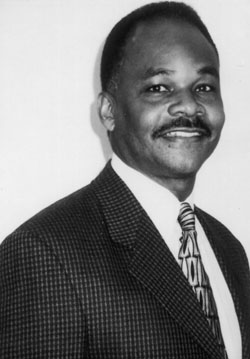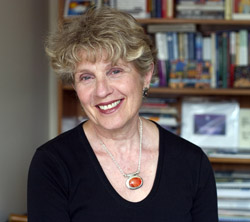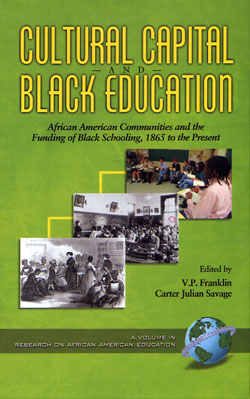Them That's Got Shall Get
Inadequate funding for schools that serve poor and minority students may be the issue de jour in the fight for equity in education, but it has a long and storied history in America. Throughout the first half of the twentieth century, black Americans in most southern states paid more in taxes than they got back in funding for separate black schools-and often the only money these schools did receive was for teachers, whose salaries were far lower than those of their white counterparts. Had it not been for the "cultural capital" supplied by the black community-money for raw materials and labor; land, machines and other equipment; the skills of workers and managers; and the networks of families, social organizations, neighborhood groups and voluntary organizations that aided students and teachers-black schools simply couldn't have existed.
Now a collection of essays called "Cultural Capital and Black Education", edited by V.P. Franklin, Professor of History and Education at TC, sounds a partly nostalgic note for those days.
"Individuals and families within the black community were willing to donate to provide these resources and funding, regardless of whether their own children benefited directly, because they saw this institution of public school as beneficial to the entire African-American community," Franklin writes.
Cultural Capital tells the story of organizations such as the African Methodist Episcopal (AME) Church, which extended support to Wilberforce University, the first institution of higher learning founded by African Americans in the United States. The church held annual "Education Sunday" collections to support Wilberforce and other educational institutions and programs. One source of motivation for the congregation: schools of higher education for African Americans were likely to train clergy as well as teachers.
Black teachers themselves provided another form of cultural capital. Particularly in the South, they saw themselves as both role models for children and leaders in the community. In more recent years, the book suggests, that commitment has given way to a view of teaching as little more than transmitting information required for mandatory standardized tests.
With the passage of the Civil Rights Act and the Supreme Court's landmark decision in Brown v Board of Education to strike down school desegregation, "many African-American families and communities felt that the things for which they had been raising cultural capital and all of these funds would now be provided for by the state, by the government, because now they were entitled to the same resources available to other citizens," Franklin writes. Yet clearly it hasn't worked that way. Segregation is still a reality in many areas of American society, Franklin contends, with the highest concentration of African-American students attending chronically under-funded urban public schools.
At the same time, after Brown, "other areas of employment opened up to African Americans with college degrees or professional training, so that you had a decrease in the number of African Americans entering teaching," Franklin says.
All of which, in Franklin's view, argues for taking a page from the past. There should be more programs aimed at encouraging African Americans to enter the teaching profession, he says. With incentives such as writing off part of their federal loans, teaching might have more attraction to them. "Cultural capital will [continue to] be an important resource in preparing African-American children to fulfill their destiny," Franklin concludes, "and to provide them with the knowledge needed to answer the question "Why am I here?".
Published Sunday, Sep. 18, 2005


